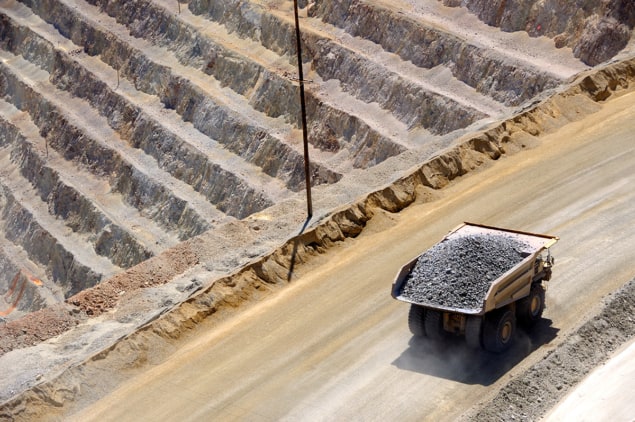
A new “keyhole surgery”-style mining technique could allow metals to be extracted from underground ore bodies without the need for vast physical excavations. The approach, which is based on electrokinetics and was developed by an international team of researchers, could reduce the environmental impact of mining while making deep ore deposits more accessible.
Industrial-scale mining is deeply damaging to the environment. Not only is the physical excavation of ore-bearing minerals highly energy-intensive, generating around 10% of all energy-related greenhouse gas emissions in 2018, it also produces incomparable quantities of waste. Globally, mining waste amounts to an estimated 100 gigatonnes per year, in the form of both overburden and the commercially useless “gangue” that surrounds valuable ore. This gangue is often highly toxic as well, meaning that disposing of it risks further environmental contamination.
“The current mining paradigm can be considered inherently unsustainable,” summarizes Rich Crane, a geochemist in the Cambourne School of Mines at the University of Exeter, UK, and an author of the new study. Demand for copper, for example, is expected to increase by 275–350% by the year 2050, yet freshly discovered deposits are increasingly of lower ore grade and found at greater depths. Mining these deposits in the traditional way would thus entail removing hundreds of metres of overburden.
Electrokinetic extraction
In their study, Crane and colleagues demonstrated an alternative approach based on electrokinetics (EK). This method, which is already used to extract metals from fly ash, soils and wastewater sludge, involves applying a direct current between two electrodes to drive the movement of dissolved charged species in the substance between, with metal ions flowing towards the cathode.
To adapt the method to work with intact, hard rock bodies, the researchers added an element of another technique, known as in situ leaching, which uses an acid to selectively dissolve the target metal from an ore deposit. In this way, metal might be recovered while bypassing the overburden and leaving most of the gangue in the ground. Then, once extraction is complete and the electric field is switched off, the acid is effectively “sealed” inside the rock – which remains essentially unchanged from a geotechnical perspective, minimizing the risk of subsidence.
“This new approach, analogous to ‘keyhole surgery’, has the potential to provide a more sustainable future for the mining industry,” Crane says. He adds that it could allow metal deposits to be recovered “while avoiding unwanted environmental disturbance and energy consumption”.
Proof-of-concept demonstration
In a laboratory-scale test of their approach, Crane and colleagues extracted 57 weight per cent of copper from a 4 cm-wide sample of low-permeability sulfidic porphyry ore. Though the full experiment took 94 days, 80% of the material recovery occurred in the first 50 days, at a relatively constant rate. The team’s numerical modelling suggests that in the field, metal could be recovered at comparable rate to that of traditional mining once the electrokinetic system was set up. The lead-up time would also be significantly reduced, as the need to remove substantial overburden would be replaced with simply drilling a grid of boreholes into which electrodes could be applied. According to Crane, the new process could be particularly cost-effective for ore deposits lying deep within the Earth’s crust or in areas where the storage of solid mine waste is, as he puts it, “problematic”.

New technology for artisanal gold miners and the pros and cons of blockchain
“Application of EK to solid rock, rather than particulate soils or wastes, is certainly a novel approach,” says Mike Harbottle, a geoenvironmental engineer at Cardiff University, UK, who was not involved in the present study. However, Harbottle adds: “From experience in other applications there are plenty of challenges to come, not least the challenge of applying this sort of voltage gradient in the field and the resulting economic impact.”
Rodrigo Ortiz Soto, a chemical engineer from the Pontifical Catholic University of Valparaiso in Chile who was also not involved in the study, is more optimistic. “If this process is proven in field-scale experiments, it can shift the entire industry, and also can have applications in copper recovery from mine tailings and considerably extend copper availability,” he says.
The study is described in Science Advances.



